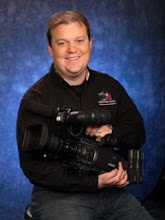
I have several large containers in my basement that hold not only a lifetime of precious memories, but generations of photo and movie-taking technology.
First are several carousels of 35mm slides and small boxes of old 8mm home movie reels shot by my grandfather from the 1940s to the 1970s. These included images and movies of my mom and my two aunts growing up. How nostalgic to see the old cars and vintage clothing. Amazing too, how much my mom growing up looks like my own daughters! Later, on Super-8mm film, there are movies of my brothers, my cousins, and me swimming in my grandfather's pool, playing basketball and shuffleboard at their place, and gathering for family events like birthday parties, Fourth of July, Thanksgiving, and Christmas. Next are several VHS tapes whose brown and faded labels list years of important events from the 1980s and '90s, when VHS tape was the day's popular format.
Then come stacks of cassette-style tapes from my first camcorder, which used the 8mm and Hi8 video format. Captured on them are key moments from high school and college, live events, music concerts, even some of my earliest video productions before starting a career in the video business. Filling out the containers are hundreds of small tapes in the MiniDV format, taken in recent years. These tapes include footage from my own children's lives–first days home from the hospital, shaky first steps, birthdays, soccer games, dance recitals, and Kindergarten graduation.
I'm eternally grateful that all these memories are captured on tape and film, but essentially they're all trapped inside these containers. To display them, we need to dig out a VHS player or the camcorders used to shoot the video. They can't be easily edited or shared and they're deteriorating over time.
That's why I've undertaken a project this summer (and likely into the fall) to convert all these memories into digital format and have them saved to DVDs. The conversion process "cleans up" some of the images; and once they're in digital format, I can edit the footage, share the video with anyone–and feel assured that it's all safely preserved for the next generation.
How the process works:
Home Video Studio offers slides-, photos-, and home-movies-to-DVD conversion at our convenient storefront in downtown Lee's Summit (other formats such as Blu-Ray and video conversion to hard drives and flash drives are available as well). The process is easy: just bring in the original movies or slides and we take care of the rest! We have unique themes for each DVD such as "baby" or "sports" and even apply your titling information (i.e. "The Smith Family Vacation 1995") directly on the interactive DVD menu and on the DVD label itself.
These DVDs organize your video into handy chapters for easy navigation–no more fast-forwarding through the entire tape to find a specific scene. And for movie film, the quality is improved during the conversion process, with colors brightened and film flicker reduced or eliminated.
Going through all these old videos, slides, and films has been an ambitious project. The results are very rewarding, especially considering that all those memories–from various years and technologies–used to be trapped inside several containers in my basement. Once completed, I'll have instant access to all the content and will be able to make copies and share them with my family in a new way.



